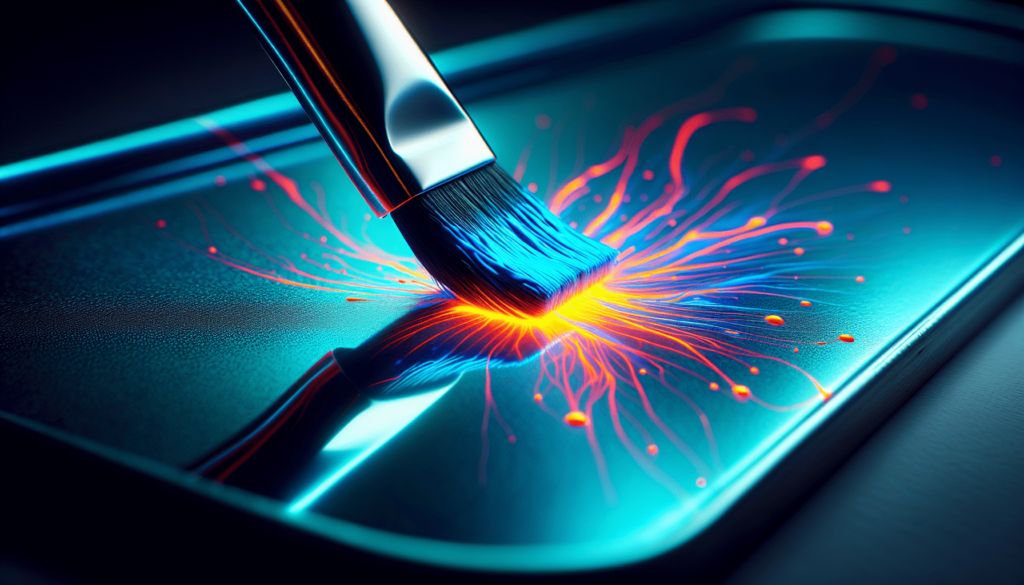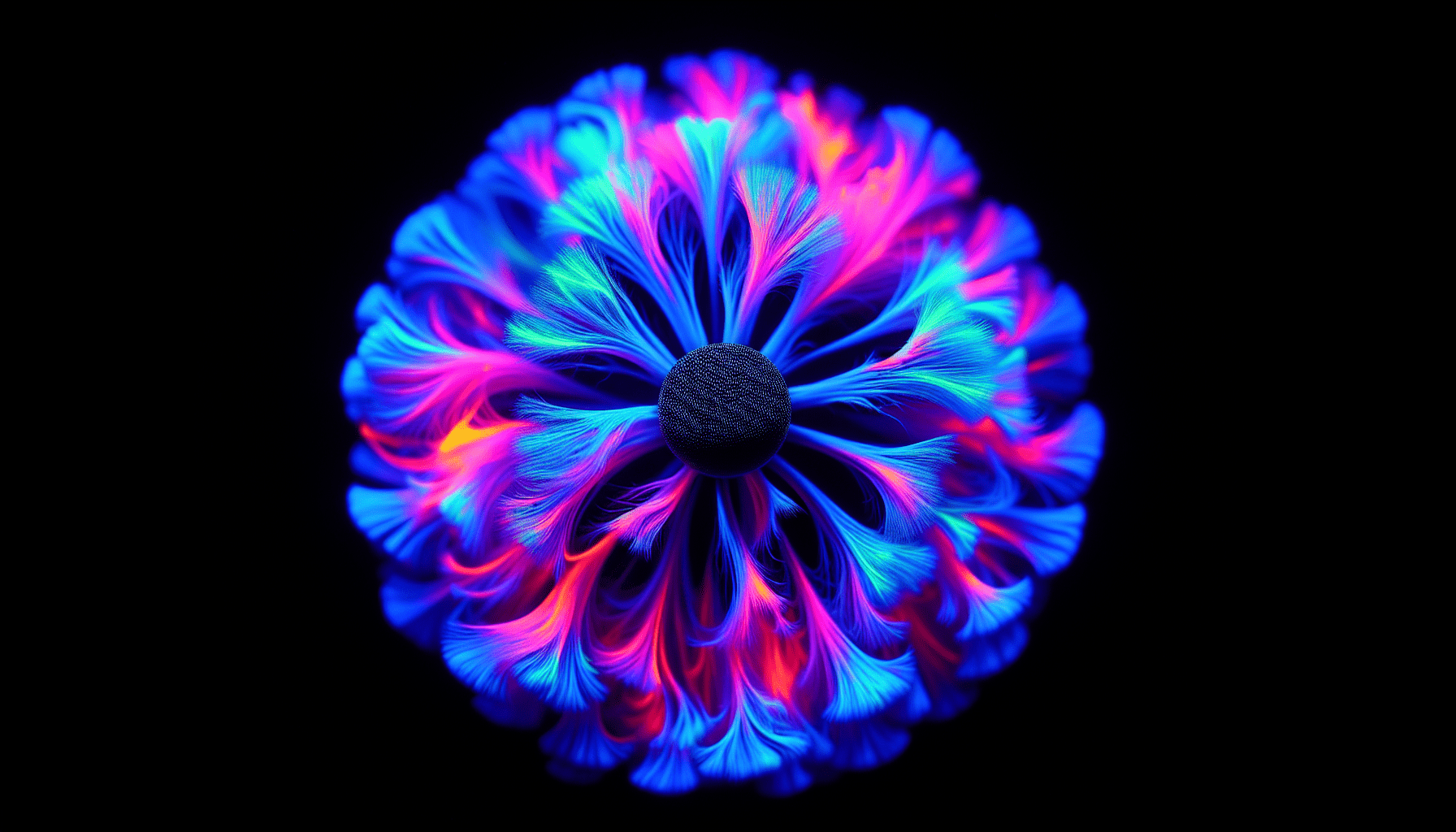In this article, you will discover the essential techniques and considerations for effectively painting with fluorescent paint on metal surfaces. Whether you are a professional artist or a DIY enthusiast, mastering this specialized form of painting opens up a world of possibilities to create vibrant and eye-catching designs that can transform any metal object. By understanding the proper preparation, application methods, and best practices for sealing and protecting your artwork, you can confidently embark on your journey to bring dazzling colors to metal surfaces. So, let’s explore the intricacies of painting with fluorescent paint on metal and unleash your creativity with this captivating art form.

Choosing the Right Fluorescent Paint
When painting with fluorescent paint on metal, it is essential to choose the right type of paint. Consider the surface type you are working with, as different paints are designed for specific materials. Some fluorescent paints are formulated specifically for metal surfaces, while others may work better on wood or plastic. To achieve the best results, it is crucial to select a high-quality fluorescent paint that is compatible with metal.
Consider the Surface Type
Before starting the painting process, it is important to consider the metal surface you will be working on. Different types of metal may require different preparation techniques and paint application methods. For example, painting on steel may differ from painting on aluminum or copper. Understanding the specific properties of the metal surface will help you choose the right fluorescent paint and ensure a successful outcome.
Look for High-Quality Fluorescent Paints
When it comes to fluorescent paint, quality matters. Opt for high-quality fluorescent paints that offer vibrant and long-lasting colors. These paints are specifically formulated to provide the brightest and most intense fluorescent effects. Look for paints that have been tested for durability and are resistant to fading over time. Investing in quality fluorescent paints will ensure that your painted metal surface retains its vibrant and eye-catching appearance for years to come.
Preparing the Metal Surface
Before applying fluorescent paint to a metal surface, proper preparation is crucial. This ensures that the paint adheres well and results in a smooth and even finish. Follow these steps to prepare the metal surface effectively.
Clean the Metal Surface
Start by cleaning the metal surface thoroughly. Remove any dirt, dust, or debris by wiping it down with a mild detergent solution or a specialized metal cleaner. Use a soft cloth or sponge to avoid scratching the surface. Ensure that the metal surface is completely dry before moving on to the next step.
Remove Any Rust or Grease
If the metal surface has any rust spots or grease stains, it is essential to remove them before painting. Use a wire brush or sandpaper to gently scrape away the rust. For grease stains, use a degreasing solvent or rubbing alcohol to clean the surface. Make sure to wear protective gloves and work in a well-ventilated area when using solvents.
Sand the Surface
To create a smooth and even surface for painting, lightly sand the metal surface with fine-grit sandpaper. This helps to remove any rough or uneven areas and provides a better surface for the paint to adhere to. After sanding, wipe away any dust with a clean cloth.

Priming the Metal Surface
To ensure proper adhesion and enhance the vibrancy of the fluorescent paint, it is recommended to apply a primer to the metal surface. Here are some key steps to follow when priming the metal surface.
Apply a Metal Primer
Select a metal primer that is designed to adhere well to metal surfaces. Using a brush or roller, apply an even coat of primer to the metal surface. Make sure to cover the entire surface area with a thin and uniform layer of primer. Allow the primer to dry according to the manufacturer’s instructions before proceeding to the next step.
Choose a Primer Compatible with Fluorescent Paint
When choosing a primer, ensure that it is compatible with fluorescent paint. Some primers may not adhere well to fluorescent paints or may interfere with the fluorescent effect. Read the labels carefully and choose a primer that specifically mentions compatibility with fluorescent coatings. This will ensure the best results when applying the fluorescent paint to the metal surface.
Applying the Fluorescent Paint
Now that the metal surface has been properly prepared and primed, it is time to apply the fluorescent paint. Follow these guidelines for optimal results.
Stir the Paint Thoroughly
Before applying the fluorescent paint, give it a thorough stir to ensure that the pigments are evenly distributed. Fluorescent paints tend to settle, and stirring prevents any inconsistencies in the color and texture of the paint.
Apply Thin Coats
When applying fluorescent paint, it is best to apply multiple thin coats rather than a single thick coat. This allows for better control and ensures a more even application. Thin coats also dry faster, which reduces the chances of the paint running or clumping. Allow each coat to dry completely before applying the next one.
Use a High-Quality Paintbrush
To achieve a smooth and professional finish, use a high-quality paintbrush specifically designed for the type of paint you are using. Brushes with synthetic bristles work well with fluorescent paints, as they provide a smooth application and minimize brush strokes. Make sure to clean the brush thoroughly after each use to maintain its quality.
Consider Using Spray Paint
For larger metal surfaces or areas that require a more intricate application, consider using fluorescent spray paint. Spray paint can create a more even and consistent finish, especially when dealing with complex shapes or hard-to-reach areas. Follow the manufacturer’s instructions for spraying techniques and safety precautions.
Maintain Proper Ventilation
When working with fluorescent paint, it is important to maintain proper ventilation. Ensure that the area you are working in is well-ventilated, ideally with open windows or exhaust fans. This helps to minimize the inhalation of fumes and allows the paint to dry properly. If necessary, use a mask or respirator to protect yourself from potentially harmful vapors.
Creating a Basecoat
To enhance the vibrancy of the fluorescent paint and create a solid foundation, it is recommended to apply a basecoat before layering the fluorescent paint.
Prime the Surface
Before applying the basecoat, prime the metal surface again, following the same steps mentioned earlier. This ensures that the basecoat adheres well to the metal and provides a smooth surface for the subsequent layers.
Apply a Basecoat
Choose a basecoat color that complements the fluorescent paint you will be using. Apply an even layer of the basecoat to the primed metal surface. This basecoat helps intensify the fluorescence of the subsequent layers and adds depth to the overall finish. Allow the basecoat to dry completely before proceeding to the next step.
Layering the Fluorescent Paint
To achieve a more intense and vibrant fluorescent effect, layering the paint is essential. Follow these steps for optimal results.
Apply Even Layers
When layering fluorescent paint, it is important to apply each layer evenly and consistently. Use a brush or roller to apply thin and even coats of paint. Avoid applying too much paint at once, as it can lead to drips and uneven coverage. Allow each layer to dry completely before applying the next one.
Allow Sufficient Drying Time
To ensure proper adhesion and prevent smudging or smearing, allow sufficient drying time between each layer of fluorescent paint. The drying time will vary depending on the specific paint and environmental conditions. Refer to the manufacturer’s instructions for recommended drying times.
Repeat for Intensity
For a more intense fluorescent effect, repeat the layering process. Apply additional layers of fluorescent paint until you achieve the desired level of intensity and vibrancy. Remember to allow each layer to dry completely before adding the next one.
Adding Detail and Effects
Once the fluorescent paint layers are complete, you can enhance the overall aesthetic by adding details and special effects.
Use Fine Brushes for Details
For intricate detailing or fine lines, use a smaller brush with fine bristles. These brushes allow for more precise control and enable you to add intricate designs, patterns, or lettering to the painted metal surface.
Experiment with Different Brushes
Don’t be afraid to experiment with different brush types and sizes to create unique textures and effects. For example, using a sponge brush can create a textured look, while a fan brush can produce softer strokes. Play around with different brushes to achieve the desired artistic effects.
Consider Using Stencils
If you want to add complex designs or graphics to your painted metal surface, consider using stencils. Stencils can provide crisp and precise shapes, allowing you to create intricate patterns or images with ease. Secure the stencil tightly to the surface and use a sponge or brush to apply the fluorescent paint within the stencil’s boundaries.
Add Glowing Effects
To enhance the fluorescent effect further, consider adding glowing effects. Glow-in-the-dark paints or pigments can be applied strategically to certain areas or layered on top of the fluorescent paint to create an eye-catching glow. Experiment with different glowing effects and positions to achieve a unique and captivating result.
Protecting the Painted Surface
After completing the painting process, it is crucial to protect the painted metal surface to ensure its longevity and durability.
Allow the Paint to Fully Cure
Before applying any protective coatings, allow the fluorescent paint to fully cure. The curing time will vary depending on the specific paint, but it typically takes several days to a week. Avoid touching or exposing the painted surface to any potential damage during this curing period.
Apply a Clear Topcoat
To protect the painted metal surface from scratches, UV damage, and general wear and tear, apply a clear topcoat. Choose a clear coat that is specifically designed for use with fluorescent paints and metal surfaces. Apply the topcoat in thin and even layers, following the manufacturer’s instructions. Allow each layer to dry completely before adding additional coats.
Consider Using UV Resistant Topcoat
If the painted metal surface will be exposed to direct sunlight or outdoor elements, consider using a UV resistant topcoat. UV resistant topcoats help to prevent fading and damage caused by prolonged exposure to the sun’s ultraviolet rays. This adds an extra layer of protection and ensures that the fluorescent paint retains its vibrant colors for an extended period.
Cleaning and Maintaining the Painted Surface
To keep the painted metal surface looking its best, proper cleaning and maintenance are essential.
Avoid Harsh Abrasives or Chemicals
When cleaning the painted surface, avoid using harsh abrasives or chemical cleaners. These can damage the fluorescent paint and diminish its vibrancy. Instead, use a soft cloth or sponge with mild soap and water to gently clean the surface. Rinse thoroughly and dry with a clean cloth.
Clean Gently with a Soft Cloth or Sponge
Regularly clean the painted metal surface by gently wiping it with a soft cloth or sponge. This helps remove any dust or dirt buildup that can accumulate over time. Regular cleaning maintains the appearance of the fluorescent paint and prevents any long-term damage.
Additional Tips and Considerations
Here are some additional tips and considerations to keep in mind when painting with fluorescent paint on metal.
Work in a Well-Lit Area
To ensure accurate color representation and achieve precise painting results, work in a well-lit area. Adequate lighting helps you see the details clearly and ensures that the colors appear as intended. Natural daylight or bright, white lighting is ideal for accurate color perception.
Wear Protective Gloves and Masks
When working with fluorescent paint, it is always advisable to wear protective gloves and masks. Gloves protect your hands from irritation and potential skin sensitivities caused by prolonged exposure to the paint. Masks prevent the inhalation of paint particles or fumes that may be harmful to your health. Safety should always be a top priority during the painting process.
Follow Manufacturer’s Instructions
Every fluorescent paint product may have specific instructions provided by the manufacturer. It is crucial to read and follow these instructions carefully. They provide essential information on application techniques, drying times, safety precautions, and any special considerations for the specific product. Following the manufacturer’s instructions ensures the best results and maintains the longevity of the painted surface.
Test on a Small Area First
Before painting the entire metal surface, it is a good practice to test the fluorescent paint on a small and inconspicuous area. This allows you to assess how the paint adheres to the metal and how the colors appear when dry. Testing ensures that you are satisfied with the results before committing to painting the entire surface.
Experiment and Have Fun
Painting with fluorescent paint on metal provides an opportunity to get creative and experiment with different techniques and effects. Don’t be afraid to try new ideas and explore various artistic possibilities. Enjoy the process and have fun with your fluorescent metal painting project.
By following these guidelines and taking the necessary steps to choose the right paint, prepare the metal surface, apply the fluorescent paint correctly, and protect the painted surface, you can achieve a stunning and long-lasting finish. Painting with fluorescent paint on metal allows you to create eye-catching and vibrant displays, whether it’s for home décor, art projects, or industrial applications.



